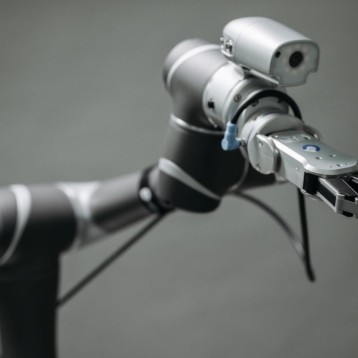During the past decade a troubling phenomenon was observed by bee keepers in the U.S. where European honey bee colony’s abruptly disappear with no apparent reason. In recent years this phenomenon had grown so rapidly that it received the title Colony Collapse Disorder (CCD). A great deal of research has been done to find the cause of CCD but to this point there is no conclusive evidence that can point to a specific cause. CCD is extremely disturbing, since bees are responsible for a large percentage of plant pollination which is at the heart of the world commercial agricultural industry (not to mention a vital part of countless plant and animal ecosystems worldwide). With no bees crops will die and animals (and humans) could starve.
–
In the face of this ominous threat researchers from the Harvard’s School of Engineering and Applied Sciences alongside Northeastern University neurobiologists have been working for the past 4 years on the challenging task of developing a robotic replacement for the honey bee.
–
Inspired by the biology of a bee and the insect’s hive behavior the team set out to create a robotic bee-like machine that has a body capable of long duration flight, can carry a large payload (relative to its mass), sense its environment and can function as part of a group and mimic the sophisticated behavior of a real colony of insects. This is clearly a colossal task, and one which took evolution millions of years to perfect. Harvard and Northeastern researchers are hoping to come up with a robotic version of their own within the next few years.
–
There are still great challenges before robots can replace bees. One of the big ones is supplying power for a long enough flight. There are currently no artificial power sources small enough that can produce the necessary power. Early testing with the RoboBees used external power supplies (see the small wire in the second video below). A solution to this problem will need to be found before any robotic bee could take to the skies for any substantial amount of time. Then there are issues with controlling dozens or even hundreds of individual robots flying next to each other and actually performing successful pollination (a complex task on its own which requires extreme precision in real life conditions including wind, rain and a host of other obstacles). However despite this numerous challenges the team remains optimistic about the chances of success in the long run and there is definitely a lot riding on this promise.
–
Once ready, a group of RoboBees might also have other applications besides pollination including environmental monitoring (especially in hazardous locations), search and rescue and even traffic monitoring. In the defense realm similar developments are already on their way including the Israeli Spy-Butterfly and the Nano Hummingbird developed by AeroVironment (to name just two).
–
–
How to create a robotic bee
A video from 2012 showing early attempts at robotic bee flight












